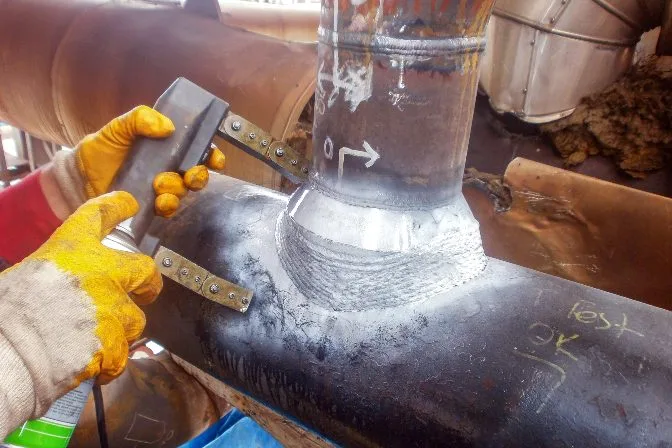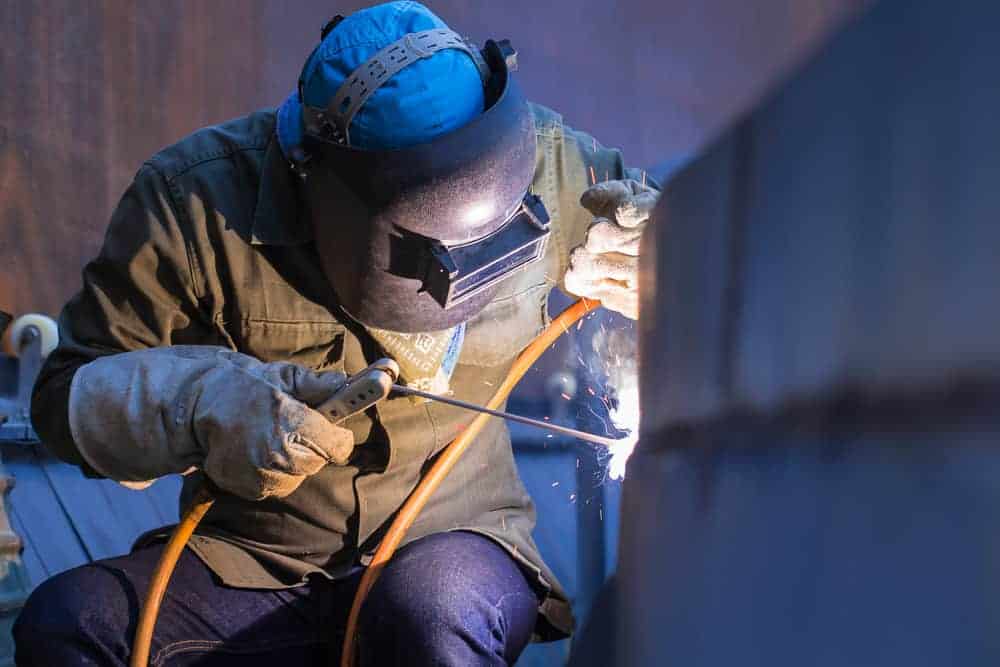Extensive Houston Welding Inspection Services for Quality Assurance
Extensive Houston Welding Inspection Services for Quality Assurance
Blog Article
A Comprehensive Overview to Understanding Exactly How Welding Inspection Works: Methods, Standards, and Best Practices for Quality Control in Steel Manufacture
Recognizing the ins and outs of welding evaluation is critical for maintaining the integrity of steel manufacture. Numerous methods, such as aesthetic and ultrasonic testing, play a critical duty in recognizing prospective problems, while adherence to established requirements makes sure conformity and longevity. Implementing ideal methods can substantially enhance top quality guarantee procedures. The landscape of welding inspection is not without its challenges. What difficulties arise in the field, and how can these be effectively reduced? Checking out these elements exposes the deepness of this crucial discipline.
Relevance of Welding Evaluation
Although welding is an essential procedure in different industries, its stability directly impacts the security and performance of components and frameworks. Effective welding evaluation is important for determining defects that might compromise the quality and longevity of bonded joints. This procedure makes certain adherence to developed standards and requirements, which are essential for keeping structural honesty and operational reliability.
Welding examination serves multiple objectives, consisting of verifying that the welding procedure has been implemented appropriately, examining the quality of materials made use of, and verifying that the finished item meets regulative and industry criteria (Houston Welding Inspection). Through strenuous evaluation, possible issues such as porosity, cracks, and insufficient fusion can be discovered early, preventing expensive repair services and minimizing security dangers
Furthermore, constant welding assessments foster confidence among stakeholders, consisting of designers, clients, and regulatory bodies, by showing a commitment to quality control. The importance of welding assessment can not be overstated; it is essential not just for compliance with legal demands however additionally for improving the general performance of bonded structures. Inevitably, a durable welding inspection program is a positive measure that safeguards versus failures, making certain the long life and dependability of bonded components in their desired applications.
Common Welding Inspection Strategies

Aesthetic examination is the very first line of defense, permitting examiners to recognize surface defects such as fractures, undercuts, or insufficient combination. Radiographic screening utilizes X-rays or gamma rays to disclose inner defects, making it suitable for complicated welds. Ultrasonic screening employs high-frequency acoustic waves to discover subsurface flaws, supplying accurate measurements of weld stability.
Magnetic particle testing works for ferromagnetic materials, highlighting surface area and near-surface suspensions when fragments are applied to an electromagnetic field. On the other hand, dye penetrant testing uses a fluid dye to expose surface-breaking issues, guaranteeing that even the smallest problems are spotted.
Each technique has its toughness and limitations, commonly necessitating a combination of methods for detailed analysis - Houston Welding Inspection. By using these inspection techniques, quality control in steel manufacture is attained, ensuring that bonded frameworks meet security and performance requirements
Market Requirements for Welding


The American Welding Society (AWS) and the American National Requirement Institute (ANSI) are two famous companies that develop welding standards. AWS D1.1, for example, describes the demands for welding steel frameworks, article source while AWS D1.2 concentrates on light weight aluminum. Internationally, the ISO 3834 common addresses quality needs for blend welding, providing a structure appropriate across nationwide borders.
Best Practices for Quality Control
Quality guarantee in welding is paramount to accomplishing long lasting and risk-free constructions. Implementing best methods guarantees that every weld meets the needed specifications and requirements. Developing a comprehensive quality monitoring system (QMS) tailored to the details welding job is vital. This QMS ought to define treatments, responsibilities, and functions to alleviate risks and boost accountability.
Regular training and certification of welding employees are important for maintaining a knowledgeable labor force. Continual education on the most up to date welding strategies and modern technologies makes certain that assessors and welders are knowledgeable concerning present standards and techniques.
In addition, carrying out pre-weld evaluations to examine products and equipment can prevent flaws prior to they happen. Houston Welding Inspection. Throughout the welding procedure, real-time surveillance and documents of welding criteria aid determine variances instantly. Post-weld evaluations ought to include detailed assessments utilizing non-destructive testing (NDT) approaches to guarantee the honesty of the welds
Furthermore, keeping clear interaction amongst staff member promotes site link a society of high quality. Routine audits and testimonials of the welding process assistance recognize locations for improvement. By adhering to these best techniques, organizations can attain ideal high quality assurance, inevitably causing improved security and efficiency in steel construction jobs.
Difficulties in Welding Inspection
Although welding examination is crucial for ensuring architectural integrity, it provides a variety of difficulties that can complicate the analysis procedure. One considerable obstacle is the irregularity in welding strategies and products made use of, which can impact the uniformity of weld high quality. Various welders may use differing techniques, resulting in disparities that inspectors demand to review and determine.
One more challenge includes the discovery of problems. Non-destructive testing (NDT) approaches, such as radiographic and ultrasonic screening, can be intricate and call for skilled technicians to analyze outcomes properly. False positives or downsides can take place, possibly resulting in pricey rework or compromised safety and security.
Additionally, the existence of ecological elements, such as temperature level and humidity, can affect the stability of welds and the efficiency of inspection strategies. Assessors must likewise navigate the governing landscape, ensuring conformity with sector requirements, which can differ by territory and application.
Conclusion
Finally, welding assessment plays an essential function in making sure the stability and security of metal construction. Utilizing a selection of assessment methods, sticking to well-known market standards, and applying efficient quality monitoring from this source practices collectively boost the dependability of bonded structures. In spite of the obstacles encountered in the examination process, a commitment to constant enhancement and adherence to finest practices can substantially reinforce the high quality guarantee structure, cultivating higher self-confidence among stakeholders in the welding market.
Efficient welding assessment is crucial for determining flaws that can compromise the high quality and durability of welded joints.Moreover, constant welding inspections foster self-confidence amongst stakeholders, consisting of engineers, customers, and regulatory bodies, by showing a dedication to high quality guarantee.The American Welding Culture (AWS) and the American National Requirement Institute (ANSI) are 2 prominent companies that establish welding criteria. Throughout the welding process, real-time tracking and documents of welding criteria aid identify incongruities promptly. In spite of the difficulties dealt with in the evaluation process, a commitment to continuous improvement and adherence to ideal methods can substantially reinforce the quality assurance framework, promoting better confidence among stakeholders in the welding industry.
Report this page